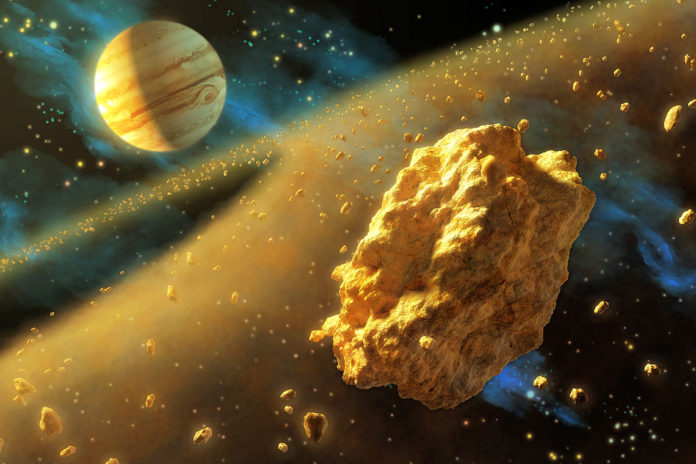Asteroids and meteors are small bodies of rock that revolve around the sun. Asteroids are located in a belt between Mars and Jupiter. There are millions of asteroids within this belt. Most are less than a kilometer in size. As a result, they are too small to be considered planets. Sometimes, they are called planetoids.
Origin of the Asteroid Belt
At one time, the solar system was a large ball of gas and dust. Over time, gravity pulled the tiny gas and dust particles together. The small particles began to condense into larger particles. Over time, planets were formed by this gravitational process.
However, the particles lying between Mars and Jupiter were disturbed by Jupiter’s gravity. Jupiter’s strong gravity prevented the particles from forming into a planet. As a result, a belt of small planetoids was created between Mars and Jupiter. This belt is known as the asteroid belt.
A small number of planetoids follow a different path around the sun. They may share the orbits of the Earth, Jupiter, Mars, and Neptune. These small objects are known as Trojan asteroids. From time to time, one will cross the Earth’s orbit and pose a potential threat to our planet.
Meteors
Rocks that travel through space are known as meteoroids. They are much smaller than a typical asteroid. Meteroids or asteroids that enter the earth’s atmosphere are called meteors. Meteors that reach the earth’s surface are called meteorites.
A small meteor that enters the atmosphere is called a ‘shooting’ or ‘falling’ star. Its fiery appearance is the result of the meteor burning up in the atmosphere.
Planetary Collisions
From time to time asteroids will collide with planets. The earth collides with small meteors on a daily basis. Collisions with large asteroids or meteroids are much less frequent..
Depending on the size of the asteroid, the impact could be minor or destructive. In the worst case, it could trigger the world wide extinction of many life forms.
In earth’s history, large meteors have struck the earth. These meteors have created large impact craters that can still be seen today. These large meteors (about 1 kilometer in size) strike the earth every two million years or so.
The impact of a large asteroid can be destructive. However, the most severe result of a collision is the creation of a large dust cloud. This dust cloud may change the earth’s climate and cause the extinction of lifeforms.
Reflections
Vocabulary
- asteroid
- meteor
- planet
Notes
- A belt of asteroids lie between Mars and Jupiter. Jupiter’s gravitational pull prevented these asteroids from forming into a planet.
- An asteroid that enters the earth’s atmosphere is a meteor.
- An asteroid impact could result in the extinction of life.

